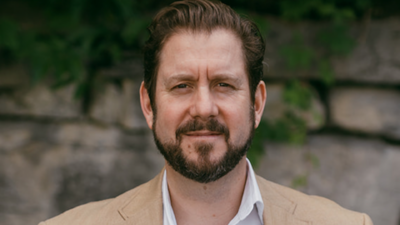Investors forge ahead with climate strategies
One clear message from this month’s COP26 climate meeting is that big investors – especially Australian investors – will not be waiting for politicians to lead the way with a response to the crisis.
Institutional investors are now “moving to the point of implementation” of their sustainability strategies, according to global manager Ninety One, with climate change risks at the forefront.
Whether or not it failed to reach the sought-after agreement on shorter-term emissions reduction targets, for many investors COP26 solidified their own goals and prompted a new sense of urgency about the implementation of policies to achieve them.
Speaking last week (November 24) ahead of a virtual roadshow for Australian and New Zealand clients and advisers, Michael Spinks (photo above), London-based co-head of Ninety One’s multi-asset growth strategy and portfolio manager, said that Australia, in particular, posed greater climate transition risk for investors because of the country’s investment in coal and its relatively carbon intensive growth.
In his presentation, Spinks has a chart showing Australia’s ranking in various sub-indicator categories as well as an overall country ranking out of about 140 countries. It’s not a good picture.
Australia is given a score of 0.33, which ranks it slightly ahead of a regional score of 0.30, but below a score of 0.4 for the group of countries with similar incomes and well below other major individual countries except China.
With the sub-indicators which make up the scores, Australia’s worst score is for biodiversity and natural capital, followed by transition risks. Transition risk is given at 60 per cent and biodiversity at more than 90 per cent.
As a commodity intensive economy, “Australia is highly exposed to transition risk,” the report says. “It is exposed across a wide range of biodiversity indicators, with falling land productivity projected to continue up to 2050.”
Stephen Small, Ninety One’s Sydney-based head of client management for Asia Pacific, says super funds and other clients have been working on their strategies, alongside managers, for a number of years and are now looking at what it all means for the portfolios.
“Net zero is the most talked about component [of sustainability] and we are very well positioned to help our clients achieve their goals in this area,” he said.
Ninety One has signed up to the Net Zero Asset Managers Initiative, launched in December last year and now with 220 managers which speak for about US$57 trillion in assets. Importantly Ninety One has more than half of its managed assets invested in emerging markets, including South Africa. This gave the firm a unique perspective, he said.
If the world is going to overcome the climate crisis emerging markets would play a crucial part. “If it’s going to happen, it will need to happen in emerging markets and simply removing capital from this area via exclusions is not the answer,” Small said.
Investors were now starting to put their money to work in solutions which focused on de-carbonisation. They were making allocations to thematic strategies that help fund the decarbonisation transition.
“There’s a very big difference between a net zero portfolio and a net zero world. You can build a portfolio by excluding emitters but that’s not positively contributing to the world. You still have to invest in and work with emitters over time.” Small said. “Ninety One firmly believes that actively investing and then engaging with companies and sovereigns on their transition plan is crucial to achieving a carbon neutral world.” Small said. Ninety One therefore continues to evolve their sustainability offering beyond Michael Spinks’ sustainable multi-asset strategy to include their thematic Global Environment and Sustainable EMD strategies to facilitate this.
Taken at face value, it looks like the global share markets have actually been reducing their exposures to carbon emissions over the past decade. Spinks says that passive global equities have seen a 7.5 per cent annualised reduction in global emissions over the past 10 years.
“But that’s mainly due to the rise in tech [share prices]. It doesn’t reflect real-world emissions numbers which peaked In 2019,” he said. “Most emissions as quoted are in the scope one and scope two categories. But if you include scope three you get a very different number, particularly for tech companies.”
Scope one is for a company’s direct emissions for what it produces on site and with its vehicles. Scope two is the indirect emissions from what it buys for its production. Scope three is the indirect emissions from supply chains and how a company’s products are used after sale.
Spinks said: “Investing for a positive environmental Impact Is an essential element In our multi-asset strategy which builds allocations from the securities level up. We also look to make a positive social Impact and Invest In companies that are sustainability leaders In terms of their ability to manage negative externalities and maximise the positive. That process cannot be narrowed down to simple scores and It’s our duty to help Investors understand the complexity.
Of the 71 stocks in Ninety One’s Global Multi-Asset Sustainable Growth portfolio, 21 had science-based climate targets for their businesses, so this gave the manager an “engagement target” to pursue with the others. Only one of its emerging markets investee companies had science-based targets and 37 companies did not have any targets at all.
“We actively engage with all the companies we invest in so we can both learn from what they are doing in terms of their future growth and also highlight the role they can play in contributing towards real world emission reductions,” Spinks said.










